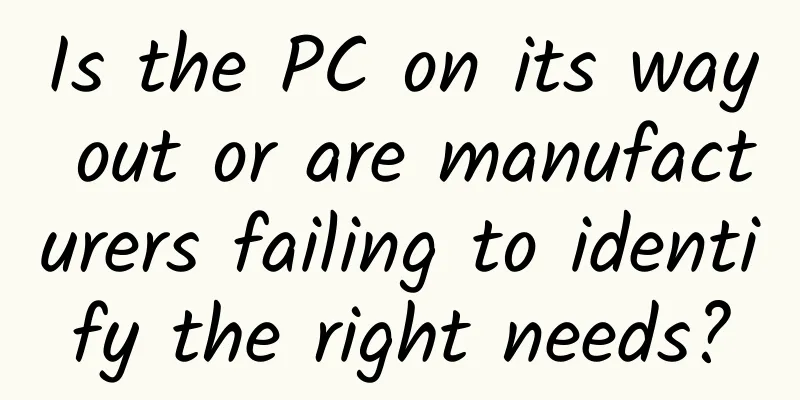Why are 5G mobile phones not selling well?

|
This year, the iPhone 11 series triggered a rush to buy as soon as it went on sale. The Midnight Green model was once out of stock. Currently, the sales of the iPhone 11 series are still growing, and Apple continues to place additional orders with suppliers. According to JD.com's self-operated flagship phone sales data in September, the iPhone 11 is far ahead with about 383,000 units, twice the second-place iPhone XR. Behind the huge sales of the iPhone 11 series without 5G this year, we discovered another picture: Android phone manufacturers launched 5G phones early on, but the sales and shipments were relatively quiet. Even to this day, the shipment and sales trends in the 5G mobile phone market are still like calm waters, without any ripples. According to data released by the China Academy of Information and Communications Technology: In August 2019, the total shipments of the domestic mobile phone market were 30.875 million units, a year-on-year decrease of 5.3%, of which 4G mobile phones were 29.478 million units, while 9 5G mobile phones were launched, with sales of only 219,000 units. The sales of some 5G mobile phones can also be seen in the September sales chart of JD.com's self-operated flagship phones, but the data is not optimistic. Gartner Curve for 5G Mobile Phones If we regard 5G as an emerging technology, then the development of emerging technologies will generally show the Gardner curve effect, that is, the development of technology generally goes through five stages: technology germination period, expectation expansion period, illusion disillusionment period, recovery period and stable production period. What stage is the current 5G technology in? In my opinion, it is between the period of inflated expectations and the period of disillusionment. At the current stage, on the one hand, everyone from ordinary users to the industry has high expectations for the changes and innovations that 5G will bring. However, the reality is that many aspects of 5G, such as application scenarios and base station network construction, are still immature, and the adaptation of software and hardware still needs to go through a series of explorations. It is hard to say whether there will be mature, innovative, and high-quality 5G products in 2019. Therefore, launching 5G mobile phones at this time may not have a strong boost to the manufacturer's product reputation. Earlier, the industry revealed that coverage may be completed in first-tier cities in 2020, but the overall market size, network coverage, and signal stability may still be unstable in the short term. However, manufacturers are trying to change their destiny by taking advantage of the 5G trend, but the current market voices are almost one-sided: it is not the time to buy a 5G mobile phone yet. On August 21, Samsung Electronics released the Samsung Galaxy Note10+ 5G, which is the first 5G mobile phone launched by Samsung in the Chinese market. The sales data of 5G mobile phone products such as Huawei Mate 20 X 5G version, IQOO 5G version, Xiaomi 9 Pro 5G version, and ZTE Axon 10Pro have not yet shown enough outstanding performance. Next, it depends on whether Huawei Mate 30 series can break the cold sales situation of 5G mobile phones. The Gardner effect of 5G actually corresponds to the hockey stick effect - in a certain fixed cycle, sales are very low in the early stage, and there will be a sudden increase in sales at the end of the period. In continuous cycles, this phenomenon will repeat itself. In other words, 5G mobile phones will most likely only see substantial growth in the middle and late stages of popularization. In the early stages, we will not see any predictable growth. There are four reasons for this. First, in the early stages of 5G development, there are many issues that need to be optimized, whether in 5G network coverage or software and hardware adaptation. Most 5G mobile phones are currently still in the stage where the concept is greater than the substance, and users are moving from a period of inflated expectations to a period of disillusionment. On Zhihu, many people are asking why many manufacturers are selling 5G mobile phones when 5G networks are still far from popularization. Is this a play on concepts or a gimmick? Li Nan, former senior vice president of Meizu Technology, also said that all 5G mobile phones before the iPhone 12 were guinea pigs. Previously, the lack of 5G in the iPhone was considered a weakness of Apple, and it would be beaten by a number of 5G mobile phone manufacturers. However, we found that whether the lack of 5G will become a weakness needs to be viewed in stages. If Apple lacks 5G in the mature stage of 5G development, it will inevitably fall behind, but in the early stages, the lack of 5G does not put Apple in an absolutely weak position. Secondly, 5G's high power consumption will lead to rapid battery consumption. The increased network speed and picture clarity of 5G will also accelerate the consumption of data traffic, which is also an important reason why many consumers are holding back. In particular, battery life is a huge pain point for consumers and an important experience that many consumers do not want to lose. According to industry insider Xiang Ligang, "5G terminal equipment uses Massive MIMO (massive multiple-input, multiple-output) antenna technology, which requires at least 8 antennas to be built into the mobile phone, and each antenna has its own power amplifier, which will generate relatively large power consumption." It is a low-return and high-cost thing. I have previously pointed out that the high power consumption of 5G will also drag down the 4-5 hours of battery life that the iPhone 11 series has finally gained. How important is battery life to consumers who are generally anxious about power consumption? You can see why the current shared power banks have been able to survive the sharp price increase. OPPO Vice President Shen Yiren even pointed out not long ago that the biggest bottleneck of mobile phone development today is the battery. A mobile phone that boasts the 5G concept but cannot perfectly experience the 5G features and may weaken the 5G battery life advantage has instead caused many users to have more psychological concerns. Third, the dispute over 5G networking standards has posed a problem for consumers. The mainstream voice in the industry believes that NSA is only a transitional solution for 5G commercial use, and SA independent networking is the ultimate direction. Yu Chengdong said: 5G that only supports NSA is the previous generation of 5G, and some mobile phones do not even support 5G. NSA will soon be eliminated, and SA is the real 5G. Qin Fei, general manager of vivo Communication Research Institute, said that all NSA single-mode 5G mobile phones launched this year will be able to be used normally in the next two years or even in the next ten years. Zhang Daijun, director of Samsung Electronics China Research Institute, once publicly stated that the 45 5G commercial networks built in the world are all NSA standards, and there is no commercial SA network. At present, the network maturity of NSA is much higher than that of SA. According to the "China Telecom 2019 Terminal Insight Report", the actual test of the difference between 5G chips under different networking modes shows that under SA networking, low latency, high speed and low power consumption are better. Minister Miao Wei of the Ministry of Industry and Information Technology once said that for mobile phones to truly reflect 5G performance, they still have to rely on independently established 5G networks. The dispute over the authenticity of 5G between the NSA networking mode and the SA networking mode has made consumers afraid to place orders rashly, for fear of being deceived by manufacturers. Fourth, the demand for application software generates the demand for hardware. For mobile phone products, there is currently a lack of typical applications in the 5G era. There is no popular application or game that can be played on 4G networks and is compatible with 5G. Qin Fei, general manager of vivo Communication Research Institute, believes that "5G mobile phones must be available at a suitable price so that users can use them as soon as possible. Only when they use them can various applications emerge, and only when various applications emerge can a virtuous cycle of the 5G market be created." Consumers are in a state of choice anxiety Therefore, based on various chaos and difficulties, consumers are now caught in a state of choice anxiety - buying a 5G mobile phone will not give them the high-speed 5G experience for the time being; but if they do not buy a 5G mobile phone, they will have to change their phone within 1-2 years. It is precisely because of this entangled mentality that users are willing to choose 4G. This actually responds to the "decision fatigue" theory in consumer psychology - that is, when faced with uncertainty, people tend to seek stability. Apple took out a more complete 4G new phone at this time and cut the price too much, which just happened to capture a wave of user dividends - since Android manufacturers have launched 5G in the high-end market, but the new iPhone has no competitors in the 4G high-end market, which actually pushed a large number of high-end market user needs to the new iPhone. But in my opinion, manufacturers have made a mistake in the marketing of 5G mobile phones. I once asked several ordinary consumers about their views on 5G mobile phones. In their opinion, the current 5G network construction is not mature. Will buying a 5G mobile phone have no network? In other words, they are more worried that after buying a 5G mobile phone, they will not be able to use the 4G network. This reflects that when domestic mobile phone manufacturers advertised 5G, they overestimated the understanding of ordinary consumers about the concept of 5G, and did not clearly tell consumers that 5G mobile phones can perfectly experience 4G in areas where 5G network construction is lacking. 5G can realize all the functions and experiences of 4G mobile phones, and supporting 5G is an incremental and a plus. According to Gartner's forecast, 5G mobile phones will only account for 6% of total mobile phone sales next year, and this proportion will only increase to 51% in 2023. The reason is that although 5G is seen by many manufacturers as a lifeline to save the industry from decline, and the entire industry can't wait, consumers have yet to be activated in terms of demand, and the industry is actually ahead of user demand. In the face of an inevitable trend, it is not good to launch products too early or too late. If it is too early, users are unwilling to be the guinea pigs, and if it is too late, the best sales window may be lost. It took 6 or 7 years for 4G to replace 3G, and 5G may take even longer than that. The industry estimates that it will take at least 8 years of continuous investment. At present, the technical level, products, content, and software cannot support the industry's expectations for this emerging industry. Regarding the issue that consumers are most concerned about - what changes have 5G mobile phones brought? Why do consumers need 5G? Manufacturers have not done a good job of market education and promotion to occupy the minds of users. 5G is not only a trend, but also a technological wave In every technological revolution in the mobile phone industry, we have found many manufacturers who got up early but were late to the party, and there are a group of manufacturers chasing the trend. There are not many manufacturers who can abandon impetuousness and keep calm. Of course, we can't blame the manufacturers for being anxious, because the trend is there, the pressure of shipment is there, and other competitors are following suit, so it is difficult for you to stand the loneliness. It is important to know that the components and antenna area of mature 5G mobile phones will increase, which will pose certain challenges to the industrial design and product innovation of mobile phones. Although Huawei HiSilicon Kirin 990 5G version, Samsung 980, and Qualcomm new 7 series have been released, the built-in 5G baseband in the current SoC is not yet mature, and the suppliers of RF, antenna, etc. also need to continue to iterate, and the upgrade of the operating system, power consumption issues, network base station construction, etc. all need to be followed up simultaneously. When new technologies are just starting out, immature performance in terms of product innovation and power consumption will affect user experience and reputation. Domestic manufacturers are often very anxious in the face of the trend, but 5G is actually more of a technological wave, not just a trend. According to Professor Wu Jun, 5G plus the Internet of Everything technology is a technological wave, a so-called big technological wave that will last for more than ten years or even decades. Since there is such a long time for development, there is no need to rush to chase the trend. You can reap your own dividends whenever you are ready to join in. In the early stage of joining the 5G mobile phone camp, those who have to compete are nothing more than those who are very sensitive to technology and like to pursue new technologies. This group of consumers does not care about the initial investment cost and trial and error cost, and is also willing to help manufacturers test technology. Relatively speaking, this group of people is quite forward-looking and more active in trying new things. However, for manufacturers, it is necessary to balance the early product sales and reputation. If users spend money to buy a concept phone that does not use 5G, it will lead to complaints from consumers and cause a downward impact on the brand image. Consumers are not stupid either. Most of them will not buy into semi-finished products that carry the 5G concept. Therefore, in general, since they have chosen to invest first, manufacturers need to master the rules of gradual advancement of technology and products. 5G is the infrastructure of the Internet of Things. Combining 5G with the Internet of Things and AI to seek product innovation is the way to break the deadlock. Only by hitting the pain points of consumers through better and better product experience and gradually meeting and exceeding user expectations can consumers finally buy in. However, this process will not be too easy after all. |
<<: Why would Microsoft launch an Android phone?
>>: Who is still selling mobile phones in China in 2020?
Recommend
Behind the plunge in Tesla’s stock price, is Musk planning a big game for shared cars?
Tesla, which has escaped the curse of low product...
Why are the "Little New Year" in the north and south not on the same day? What you don't know about "Officials are three, civilians are four, and boats are five"
In the blink of an eye, the "Little New Year...
Weibo Fans Advertising and Charging Standards!
1. Introduction to Fantong What is Fantong? To pu...
Jie Jingjing of Xiaoju Energy: Accelerate intelligent innovation in the charging industry and build a high-quality service system
On September 14, the "Third Electric Vehicle...
Is iPhone XR really cost-effective? Here are 3 reasons to give it up
This week, the iPhone XR, which is known as the &...
Introduction to account opening fees and billing methods for pp assistant promotion advertising!
Basic introduction of PP Assistant promotion plat...
Is the latest news about Shenyang’s lockdown in 2022 true? Lock down the city on the 24th? Lock down the city for 7 days?
Due to the recent severe domestic epidemic in my ...
Is my country using chickens and ducks to control locust plagues? The real scientific control of locusts is actually like this
Produced by: Science Popularization China Author:...
Ideal ONE overturned a motorcycle due to a broken axle, and the official accused it of being a rumor. The person involved responded that it was indeed man-made.
On February 4, Ideal Auto officially announced th...
Lei Jun vs. Zhou Hongyi: A 20-year-long "battle between heaven and earth"
Destined to be unfriendly "The predecessors ...
What exactly is the 2.5D glass that manufacturers are always boasting about? Is it very powerful?
Since the release of iPhone 6 last year, there ha...
Not only are these foods not "toxic" after sprouting, they may also have higher nutritional value. Don't waste them!
This article was reviewed by Zhang Zhaomin, Maste...
How much does it cost to attract investment in the Bengbu Tea Mini Program? What is the investment price of Bengbu Tea Mini Program?
The overall investment promotion of Bengbu Tea Mi...
OPPO R11s review: Your girlfriend's favorite phone is now even better
When it comes to domestic mobile phone brands wit...
How does novel distribution make money? What are the promotion methods for novel distribution?
With the rapid development of self-media, everyon...









